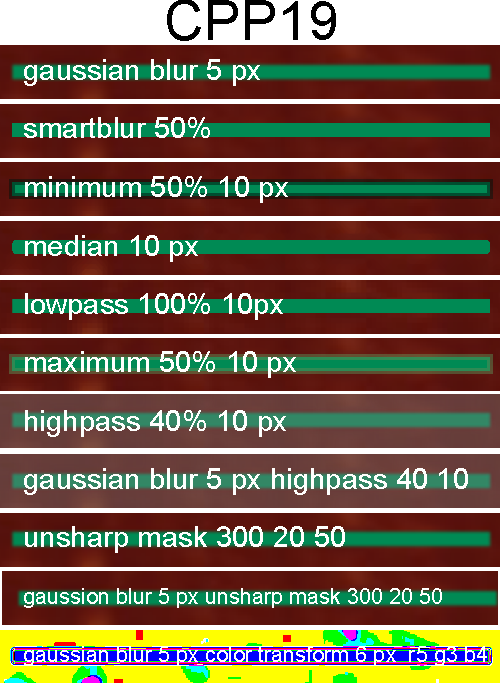Monthly Archives: August 2021
CorelDRAW19 various processing algorithms applied to one AFM image of SP-D
Using CorelDRAW19 various processing algorithms have been applied to one AFM image of surfactant protein D. This image was derived from Arroyo et al, and is among dozens of images from various authors that I am using to test the validity and efficacy of such image processing. The list of programs used for this particular image (then vary from processing programs, e.g. photoshop, gimp, gwiddion, imageJ etc. because of the menu options in each program) and from free and proprietary image processing libraries that may or not be available to software developers. While it has taken months, the comparison is something that I needed to do since I have both old and new versions of the industry standards (CorelPhotoPaint, and Draw, and Photoshop) and it was important to see whether there were changes in image processing algorithms that caused significant differences in gray scale (y axis) for surfactant protein D images.
the list for this composite (plot) overlay is: gaussian blur (5px); gaussian blur (5px) and high pass 40%-10 px radius; gaussian blur (5px) unsharpmask (300%- 20 px radius- threshold 50; lowpass 100% 10 px radius; maximum 50% 10 px radius; median 5 px radius; minimum 50% 10 px radius; smartblur 50. Each of the resulting image were measured using ImageJ. Plots were conformed to the mean arm length of all processing and measuring for this single image. A single background measure (each background was taken at the same time as the measurements, and in the same location) is shown around 50 on the gray scale.
Each plot is a different color and each arm (meaning CRD to CRD in a hexamer) were plotted separately and are shown separately thus, 16 individual plots and 16 colors. Approximate width at the valley of the plots is given in nm.
EVEN or ODD or BOTH
Peak counts in the span of both hexamers of a dodecamer comes out to be something between an even and an odd number. This is not really interesting except that it might relate to the issue of whether the N termini (junction of four trimer N termini) that is the center and highest peak found with AFM of surfactant protein d dodecamers…. there is good visual data that says sometimes the N termini are joined in ways other than overlapping (overlapping is the wrong word, more like juxtaposed). The later, in AFM can be side by side, or end to end. No consensus has been found in the literature so far by me, by me anyway. I subscribe to the idea that more configurational variations happen that is usually realized.
Just over 350 measurements of brightness”peaks” for ONE molecule of SP-D (a dodecamer AFM image from arroyo et al (which i have named 41 aka 45) the data for peaks along the arms is: (keep in mind that the center peak is likely not mirrored in a consistent way, thus the number of paired peaks on right and left arms of both hexamers will tend to be an odd number) in that sense, the peaks from looking quickly at each image, and then using ImageJ to plot the peaks of brightness, and adding those, the number of peaks in each hexamer is as follows. This particular molecule has arms of different lengths with what I have called “arm 2” being longer than arm 1. The right portion of the dodecamer looking like it was been stretched during preparation. It is still useful to see whether the physical elongation of an SP-D arm allows for greater, or lesser definition of the peaks which occur in the area between the N termini and respective CRD domains.
Below, the image, the summary statistics. These are all measures on the same image, processed in a dozen different image processing programs. The image below is a sample, bar marker is green, and 100nm. Image stated above is from arroyo et al.
Comparing gaussian blur – 5 and 10px radius
There are some differences in the “libraries” that are used for image processing. It is important to determine which is best for your application. Below is a quick visual summary of 5 and 10 px gaussian blurs from a dozen or so programs. Inkscape is missing, as I could not find the specific term “gaussian” for any blur filters. Most of these programs are similar but some are expensive to purchase, or have a monthly contract for, others are free software. While i really do like photoshop (two versions here) and corelDRAW and corelPhotopaint (two versions here), ImageJ is easy to use and provides pretty comparable results albeit on a very much smaller selection of effects and filters to the former programs. The bar marker example here was a vector box (no outline) layered onto an image, exported as a tif and processed in these programs as such.















